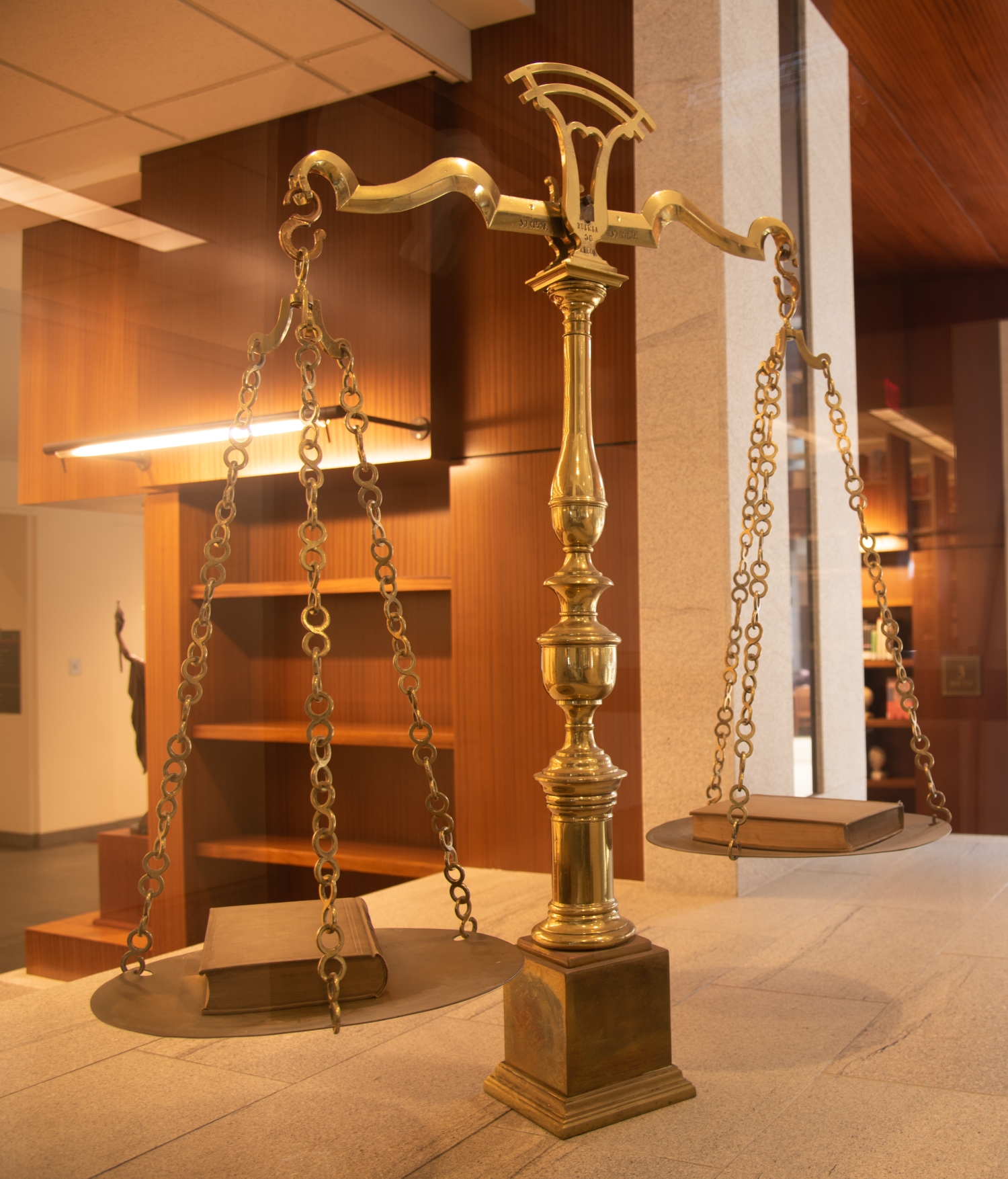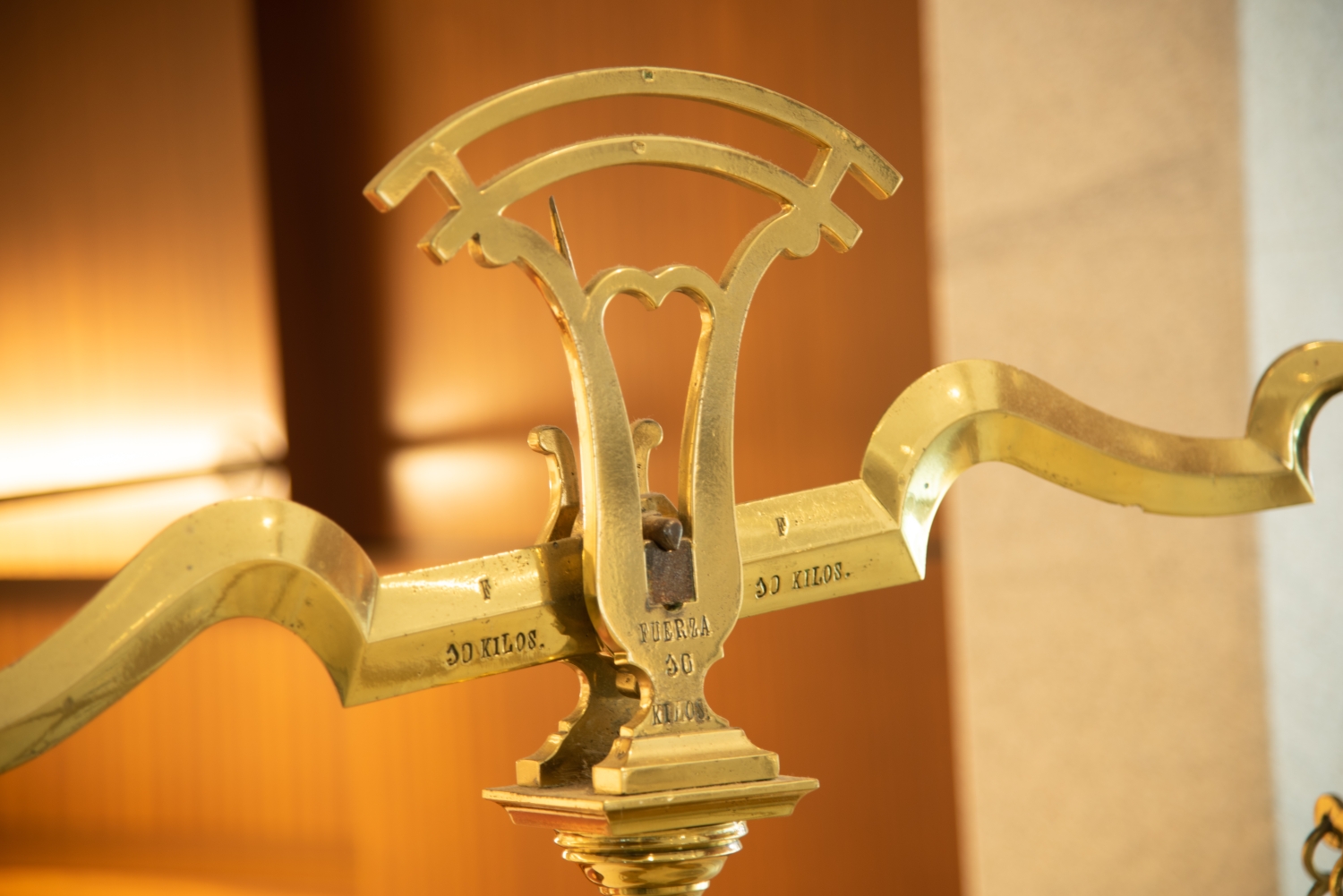All Library locations will be closing early Wednesday, November 26 at 5 p.m. and will reopen Saturday, November 29.
Scales of Justice
This equal-arm balance scale is comprised of metal (likely brass) and weighs in accordance with the metric system. The most simplistic version of a balancing scale, the equal arm scale balance has been used throughout the earliest periods of history as an elementary lever. The oldest evidence for the presence of weighing scales is dated to circa 2400 to 1800 B.C. in the Indus River valley. This traditional scale consists of a fulcrum, or beam, a pointer, and two scale pans. The two scale plans ( plates) are suspended at equal distance from the fulcrum. The pointer shows the extent of the swing of the beam from one side to the other. The balance is on a central square base, and stylized bronze column. A fan shaped head decorates the top of the column, to which the pointer is positioned.





